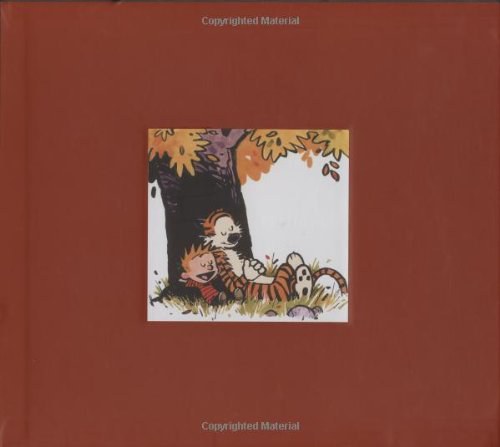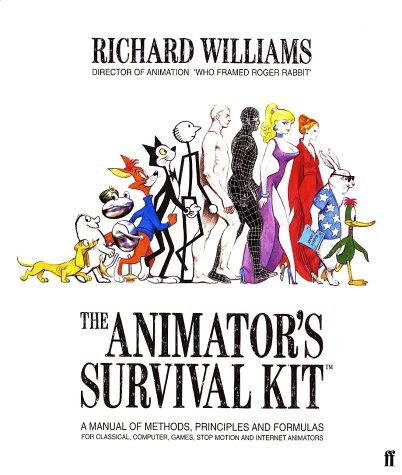
《Deep Learning》书籍《Deep Learning》
书刊介绍
内容简介
"Written by three experts in the field, Deep Learning is the only comprehensive book on the subject." -- Elon Musk, co-chair of OpenAI; co-founder and CEO of Tesla and SpaceX
Deep learning is a form of machine learning that enables computers to learn from experience and understand the world in terms of a hierarchy of concepts. Because the computer gathers knowledge from experience, there is no need for a human computer operator to formally specify all the knowledge that the computer needs. The hierarchy of concepts allows the computer to learn complicated concepts by building them out of simpler ones; a graph of these hierarchies would be many layers deep. This book introduces a broad range of topics in deep learning.
The text offers mathematical and conceptual background, covering relevant concepts in linear algebra, probability theory and information theory, numerical computation, and machine learning. It describes deep learning techniques used by practitioners in industry, including deep feedforward networks, regularization, optimization algorithms, convolutional networks, sequence modeling, and practical methodology; and it surveys such applications as natural language processing, speech recognition, computer vision, online recommendation systems, bioinformatics, and videogames. Finally, the book offers research perspectives, covering such theoretical topics as linear factor models, autoencoders, representation learning, structured probabilistic models, Monte Carlo methods, the partition function, approximate inference, and deep generative models.
Deep Learning can be used by undergraduate or graduate students planning careers in either industry or research, and by software engineers who want to begin using deep learning in their products or platforms. A website offers supplementary material for both readers and instructors.
作品目录
Acknowledgments xv
Notation xix
1 Introduction 1
1.1 Who Should Read This Book? 8
1.2 Historical Trend sin Deep Learning 12
I Applied Math and Machine Learning Basics 27
2 Linear Algebra 29
2.1 Scalars, Vectors, Matrices and Tensors 29
2.2 Multiplying Matricesand Vectors 32
2.3 Identity and Inverse Matrices 34
2.4 Linear Dependence and Span 35
2.5 Norms 36
2.6 Special Kinds of Matrices and Vectors 38
2.7 Eigendecomposition 39
2.8 Singular Value Decomposition 42
2.9 The Moore-Penrose Pseudoinverse 43
2.10 The Trace Operator 44
2.11 The Determinant 45
2.12 Example: Principal Components Analysis 45
3 Probability and Information Theory 51
3.1 Why Probability? 52
3.2 Random Variables 54
3.3 Probability Distributions 54
3.4 Marginal Probability 56
3.5 ConditionalProbability 57
3.6 The Chain Rule of Conditional Probabilities 57
3.7 Independence and Conditional Independence 58
3.8 Expectation, Varianceand Covariance 58
3.9 Common Probability Distributions 60
3.10 UsefulPropertiesofCommonFunctions 65
3.11 Bayes’Rule 68
3.12 Technical Details of Continuous Variables 68
3.13 Information Theory 70
3.14 Structured Probabilistic Models 74
4 Numerical Computation 77
4.1 Overflow and Underflow 77
4.2 Poor Conditioning 79
4.3 Gradient-Based Optimization 79
4.4 Constrained Optimization 89
4.5 Example: Linear Least Squares 92
5 Machine Learning Basics 95
5.1 Learning Algorithms 96
5.2 Capacity, Overfitting and Underfitting 107
5.3 Hyperparameters and Validation Sets 117
5.4 Estimators, Bias and Variance 119
5.5 Maximum Likelihood Estimation 128
5.6 BayesianStatistics132
5.7 Supervised Learning Algorithms 136
5.8 Unsupervised Learning Algorithms142
5.9 StochasticGradientDescent 147
5.10 Building a Machine Learning Algorithm 149
5.11 Challenges Motivating Deep Learning 151
II Deep Networks: Modern Practices 161
6 Deep Feedforward Networks 163
6.1 Example:Learning XOR 166
6.2 Gradient-Based Learning 171
6.3 Hidden Units 185
6.4 Architecture Design 191
6.5 Back-Propagation and Other Dierentiation Algorithms 197
6.6 Historical Notes 217
7 Regularization for Deep Learning 221
7.1 Parameter Norm Penalties 223
7.2 Norm Penalties as Constrained Optimization 230
7.3 Regularization and Under-Constrained Problems 232
7.4 Dataset Augmentation 233
7.5 Noise Robustness 235
7.6 Semi-Supervised Learning236
7.7 Multitask Learning 237
7.8 Early Stopping 239
7.9 Parameter Tying and Parameter Sharing 246
7.10 Sparse Representations 247
7.11 Bagging and Other Ensemble Methods 249
7.12 Dropout 251
7.13 Adversarial Training261
7.14 Tangent Distance, Tangent Prop and Manifold Tangent Classiffer 263
8 Optimization for Training DeepModels 267
8.1 How Learning Differs from Pure Optimization 268
8.2 Challenges in Neural Network Optimization 275
8.3 Basic Algorithms 286
8.4 Parameter Initialization Strategies 292
8.5 Algorithms with Adaptive Learning Rates 298
8.6 Approximate Second-Order Methods 302
8.7 Optimization Strategies and Meta-Algorithms 309
9 Convolutional Networks 321
9.1 The Convolution Operation 322
9.2 Motivation 324
9.3 Pooling 330
9.4 Convolution and Pooling as an Infinitely Strong Prior 334
9.5 Variants of the Basic Convolution Function 337
9.6 Structured Outputs 347
9.7 Data Types 348
9.8 Efficient Convolution Algorithms 350
9.9 Random or Unsupervised Features 351
9.10 The Neuroscientific Basis for Convolutional Networks 353
9.11 Convolutional Networks and the History of Deep Learning 359
10 Sequence Modeling: Recurrent and Recursive Nets 363
10.1 Unfolding Computational Graphs 365
10.2 Recurrent Neural Networks 368
10.3 Bidirectional RNNs 383
10.4 Encoder-Decoder Sequence-to-Sequence Architectures 385
10.5 Deep Recurrent Networks 387
10.6 Recursive Neural Networks 388
10.7 The Challenge of Long-Term Dependencies 390
10.8 Echo State Networks 392
10.9 Leaky Units and Other Strategies for Multiple Time Scales 395
10.10 The Long Short-Term Memory and Other Gated RNNs 397
10.11 Optimization for Long-Term Dependencies 401
10.12 Explicit Memory 405
11 Practical Methodology 409
11.1 Performance Metrics 410
11.2 DefaultBaselineModels 413
11.3 Determining Whether to Gather More Data 414
11.4 Selecting Hyperparameters 415
11.5 Debugging Strategies 424
11.6 Example: Multi-Digit Number Recognition 428
12 Applications 431
12.1 Large-Scale Deep Learning 431
12.2 Computer Vision.440
12.3 Speech Recognition 446
12.4 Natural Language Processing 448
12.5 Other Applications 465
III Deep Learning Research 475
13 Linear Factor Models 479
13.1 Probabilistic PCA and Factor Analysis 480
13.2 Independent Component Analysis (ICA) 481
13.3 Slow Feature Analysis.484
13.4 Sparse Coding 486
13.5 Manifold Interpretation of PCA 489
14 Autoencoders 493
14.1 Undercomplete Autoencoders 494
14.2 Regularized Autoencoders 495
14.3 Representational Power, Layer Size and Depth 499
14.4 Stochastic Encodersand Decoders 500
14.5 Denoising Autoencoders501
14.6 Learning Manifolds with Autoencoders 506
14.7 Contractive Autoencoders 510
14.8 Predictive Sparse Decomposition 514
14.9 Applications of Autoencoders515
15 Representation Learning 517
15.1 Greedy Layer-Wise Unsupervised Pretraining 519
15.2 Transfer Learning and Domain Adaptation 526
15.3 Semi-Supervised Disentangling of Causal Factors 532
15.4 Distributed Representation 536
15.5 Exponential Gains from Depth 543
15.6 Providing Clues to Discover Underlying Causes 544
16 Structured Probabilistic Models for Deep Learning 549
16.1 The Challenge of Unstructured Modeling 550
16.2 Using Graphs to Describe Model Structure 554
16.3 Sampling from Graphical Models 570
16.4 Advantages of Structured Modeling 572
16.5 Learning about Dependencies 572
16.6 Inferenceand Approximate Inference 573
16.7 The Deep Learning Approach to Structured Probabilistic Models 575
17 Monte Carlo Methods 581
17.1 Sampling and Monte Carlo Methods 581
17.2 Importance Sampling 583
17.3 Markov Chain Monte Carlo Methods 586
17.4 Gibbs Sampling 590
17.5 The Challenge of Mixing between Separated Modes 591
18 Confronting the Partition Function 597
18.1 The Log-Likelihood Gradient 598
18.2 Stochastic Maximum Likelihood and Contrastive Divergence 599
18.3 Pseudolikelihood 607
18.4 Score Matching and Ratio Matching 609
18.5 DenoisingScore Matching 611
18.6 Noise-Contrastive Estimation 612
18.7 Estimatingthe Partition Function 614
19 Approximate Inference 623
19.1 Inferenceas Optimization 624
19.2 Expectation Maximization 626
19.3 MAP Inferenceand Sparse Coding 627
19.4 Variational Inferenceand Learning 629
19.5 Learned Approximate Inference 642
20 Deep Generative Models 645
20.1 Boltzmann Machines 645
20.2 Restricted Boltzmann Machines 647
20.3 Deep Belief Networks 651
20.4 Deep Boltzmann Machines 654
20.5 Boltzmann Machines for Real-Valued Data 667
20.6 Convolutional Boltzmann Machines 673
20.7 Boltzmann Machines for Structured or Sequential Outputs 675
20.8 Other Boltzmann Machines.677
20.9 Back-Propagation through Random Operations 678
20.10 Directed Generative Nets 682
20.11 Drawing Samples from Autoencoders 701
20.12 Generative Stochastic Networks 704
20.13 Other Generation Schemes 706
20.14 Evaluating Generative Models 707
20.15 Conclusion 710
Bibliography 711
Index 767
相关推荐
-

中国哲学通史(明代卷)
《中国哲学通史(明代卷)》内容简介:宋明理学是中国传统哲学发展的高峰,但在宋明之间,既存在着思想谱系的一致性,又存在着“得
-

痛苦典当行:南人诗歌绘本
《痛苦典当行:南人诗歌绘本》内容简介:《痛苦典当行》精选“短诗王”南人的七十多首犀利诗作,搭配新锐插画师黄丽的三十多张奇诡
-

算法精粹
《算法精粹》内容简介:本书是一本面向中高级程序员的算法教程,借助Python语言,用经典的算法、编码技术和原理来求解计算机科学的
-

Kubernetes实战
《Kubernetes实战》内容简介:在本书中,四位在分布式系统、企业应用开发和开源领域有着丰富经验的Kubernetes专家将会对使用Kubern
-

Excel VBA语法辞典
《Excel VBA语法辞典》内容简介:《Excel VBA语法辞典》使用174个实例详细介绍了Excel VBA的语法内容,全书共分9章,分别介绍了VBA
-

数据库系统简明教程
数据库系统简明教程 本书特色 《数据库系统简明教程》是由王珊所编著,高等教育出版社出版发行的。数据库系统简明教程 内容简介 本书系统地阐述了数据库系统的基础理论...
-

《刑法修正案(十一)》理解与适用
《《刑法修正案(十一)》理解与适用》内容简介:本书立足《刑法修正案(十一)》的法律条文,对《刑法修正案(十一)》的立法背景
-

激活免疫力
《激活免疫力》内容简介:本书作者倡导“知行合一”的健康生活方式,坚持2800天亲自实践“早睡早起+合理饮食+科学运动”的健康生活
-

第一次发现名画之美:莫奈
《第一次发现名画之美:莫奈》内容简介:本书的亮点是每幅经典画作都以孩子的视角、孩子的语言对经典艺术作品提问,以问答的形式进
-

地理信息系统数据库-第二版
地理信息系统数据库-第二版 本书特色 《地理信息系统数据库(第2版)》详细论述了地理信息系统数据库的基本理论、技术方法、实践应用、*新理论与发展趋势。内容全面、...
-

论书随笔
《论书随笔》内容简介:本书是近现代著名书法家启功先生书法思想的总结。启功先生从自己的书写实践出发,不仅对书法的笔顺、结构等
-

王绍强《设计法则100》
《设计法则100》是一本关于如何做好设计的思想智能手册。什么是好的设计?怎样才能做好设计?设计师们在面对各种项目要求和挑战时
-

银行业产品管理实战精析
《银行业产品管理实战精析》内容简介:本书是关于银行业产品管理实战方面的书籍,内容包括银行业产品管理体系、产品管理战略、产品
-
![[韩] 崔京源《红色范思哲 灰色阿玛尼》](http://oss.shudanhao.com/caiji/chazidian/2023/37559.jpg)
[韩] 崔京源《红色范思哲 灰色阿玛尼》
《红色范思哲灰色阿玛尼:跟大师学色彩搭配》从“色”的角度对绚丽的时装世界进行了探索。它不是一大堆色彩理论的堆砌,而以巴黎、
-

Asterisk权威指南(原书第5版)
《Asterisk权威指南(原书第5版)》内容简介:本书第5版覆盖Asterisk16的最新发展。本书不仅全面讲述了Asterisk最新技术和应用,还
-

奚江华《圣殿祭司的ASP.NET 2.0开发详解》
本书以全新的ASP.NET2.0内容设计为出发点,循序渐进地以图文步骤及观念讲解新的ASP.NET2.0技术精要。内容涵盖VisualStudio20
-

Linux集群之美
《Linux集群之美》内容简介:全书共9章,主要是以作者的项目实践为基础,以CentOS 7.5x86_64为主操作系统、AWS云为平台,介绍Linux
-

司法的长期主义
《司法的长期主义》内容简介:本书的内容体现了最新成长起来的法律人的思维方式,代表了逐渐掌握话语权的新生代法律人的法治理念。
-

John M·Vlissides《设计模式沉思录》
本书作者是设计模式的开山鼻祖之一。在本书中,他不仅通过一些通俗易懂的实例对如何运用设计模式进行了深入的讲解,而且还介绍了
-

崔巍《Web 3.0走进3D时代-全球首创三维网络商业中心》
Web1.0,这个概念对很多人来说,早已不再新鲜。没错,Web1.0是最传统的网络平台。Web2.0,这个概念对很多网络爱好者来说也已经不





